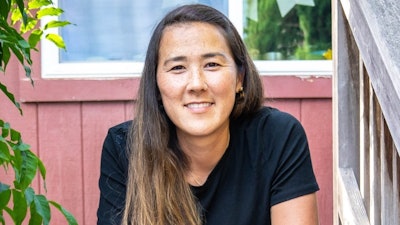Higher education leaders and states can take a number of additional steps to bolster academic success, reenrollment, and degree completion for students who started college but never finished. Those are the findings from a new report from California Competes. Dr. Laura Bernhard
Dr. Laura Bernhard
These students with some college, no credential (SCNC) make up more than six million Californians ages 25-64. Drawing from interviews with 52 adults who had stopped out but reenrolled – those referred to as ‘comebackers’ – and completed/will complete soon, the report outlines a series of recommendations for higher ed leaders and state policymakers to take to support these comebackers in their return but also to help students before they feel the need to leave.
"The population of comebackers, and adult learners more generally, is a priority for California Competes, largely because what we see is we can't meet our state's higher education needs without serving this population of potential students. Just focusing on the high school senior, leaves us short,” said California Competes CEO Dr. Su Jin Jez, adding that focusing on this growing demographic is important to meet workforce needs.
The interviewees were successful comebackers from California State University, Sacramento State and the Shasta-Tehama-Trinity Joint Community College District.
According to "From Setback to Success: Meeting Comebacker Students Where They Are" – research done as part of the CaliforniaAttain! partnership – the SCNC population disproportionately consists of individuals from underinvested group.
The report’s recommendations revolve around themes of flexibility, accommodation, inclusivity, proactiveness, and continuous support.
Online courses and programs were both praised by comebackers and suggested by the report’s authors for the flexibility in scheduling that they provide. And structuring courses to have shorter terms – such as 8-week terms instead of 16 – allows for easier course juggling and more windows in the year for comebackers to enroll, the report stated.
On the topic of academic success, schools should keep an eye out for dips in single-term GPA – instead of just cumulative GPA – to use as early warning signs of a struggling student and provide early guidance through faculty and advisers accordingly, the report recommended. And even when students are placed on academic probation, this status should be framed as temporary and a warning instead of as a punishment.
Using the term, ‘academic probation,’ invokes carceral and punitive connotations, Jez said. And the status was found to have prompted many students to stop out altogether, said report author Dr. Laura Bernhard, a senior researcher at California Competes.
"For faculty, staff, and deans, they felt like academic probation was a process by which students are given a warning, an alert,” Jez said. “What students heard was, 'You need to go.'"
Those who find themselves failing classes can also be stuck in a negative cycle, the report said, suggesting grade forgiveness as a way to catch students before that happens.
“Some students placed on academic probation lost access to financial aid and needed to raise their GPA to regain access to aid—a common catch-22 whereby students cannot reenroll and improve their grades without financial aid, and cannot get financial aid unless they reenroll and improve their grades,” the report noted. “For students who had a high number of college credits, raising their GPA above the 2.0 threshold took multiple terms; for those who did not have financial aid, this came at a significant cost.”
Finances remain a significant hurdle for comebackers, something schools can potentially help with through tuition assistance, payment plans, course waivers, and grants, according to the report.
The outreach that schools do for SCNC adults and comebackers has room to improve as well, with the report advising higher ed officials to ask those who stop out for specifics on their reasons why and the duration of their pause. And if learners express an intent to return, schools should connect them to the right support services – mental health, financial, academic aid – to address the problems that led to them leaving.
Even simpler changes such as avoiding the language of ‘traditional and non-traditional learners’ and not making assumptions about students’ past experiences and responsibilities may help lead to fewer instances of comebackers feeling marginalized, according to the report.
There are always going to be students who have to stop out because of life events, Bernhard said.
“Rarely did the students talk about not being able to do the work,” Bernhard said. “It was that, inevitably, some of them had to stop out because of life. So, I think, no matter what institutions can do to help students stay in college, some people are going to have to take a break at some point because of any number of things that come up for them. As we say, life happens.
“It's not really a condemnation of either the student nor the institution. I think we're going to just always have people who are coming in and out."
But a steep climb back into postsecondary education may await comebackers upon their return, according to the report. Comebackers, considered new students again, don’t have priority or seniority when it comes to class registration, which can lead to them not getting the class they need.
“When I went back, [I] was tossed to the bottom of the priority list, when I was so close to being done,” Laura, a single mother with a full-time job, said in the report.
Other obstructions on the climb back up include lingering library fines and course fees that may prevent reenrollment. Though according to the report, lower fees and institutional debt forgiveness for such costs actually leads to higher reenrollment and revenue.
The authors additionally advised leaders to consider orientation programs specifically for comebackers, particularly for those not familiar with the rising use of technology and online services in schooling since their last educational pursuit.















